
cuts of beef
Discover the Cuts of Beef Available at Bluestem Hollow

Filet
mignon
filet mignon is known for its exquisite flavor and incredible tenderness and is sourced from the smaller end of the tenderloin.
Why Chef Robert loves Filet Mignon: The filet is naturally the most tender cut of all. They are so versatile. You can prepare them most any way and they will always impress your guest.
Suggested Cooking Methods: One of the most popular ways to cook filet is to pan sear it, which involves cooking the steak in a hot skillet. You can grill the filet to create a smoky flavor that complements its natural taste. Lastly, you can broil filet to achieve a crisp exterior.

Shoulder Roast
Shoulder Roast is a versatile and flavorful cut of beef that comes from the shoulder area of the cow. It’s very similar to chuck roast, but it’s located a little higher up on the cow. Shoulder roasts have a lot of natural flavor but also take on herbs like rosemary and thyme really well.
Why Chef Robert loves Shoulder Roasts: They are the most tender pot roast or stew around!
Suggested Cooking Methods: The key to a perfect shoulder roast is slow cooking. This allows the collagen to break down into gelatin, resulting in tender and moist texture. You can also roast at a low temperature for an extended period of time. This helps to caramelize the exterior while keeping the interior juicy. This technique enhances the natural flavors of the roast.
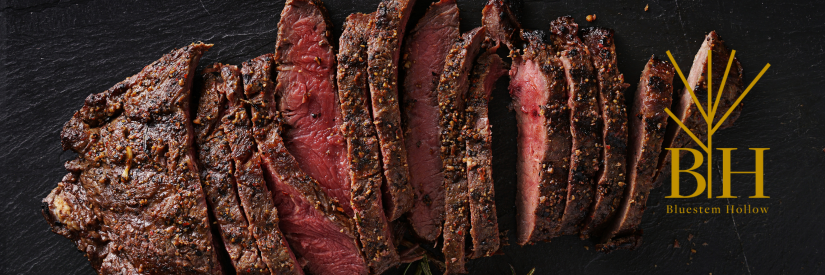
flat iron
Flat iron steak is a cut from the shoulder (or chuck) of the cow. It's known for its rich flavor and tenderness, comparable to more expensive cuts like ribeye or tenderloin.
Why Chef Robert loves Flat Iron Steak: Flat Iron Steak is incredibly tender due to our careful butchering that removes the connective tissue. It has robust, beefy flavor making it perfect for a bunch of different dishes.
Suggested Cooking Methods: You can pan-sear, grill or broil flat iron steak.
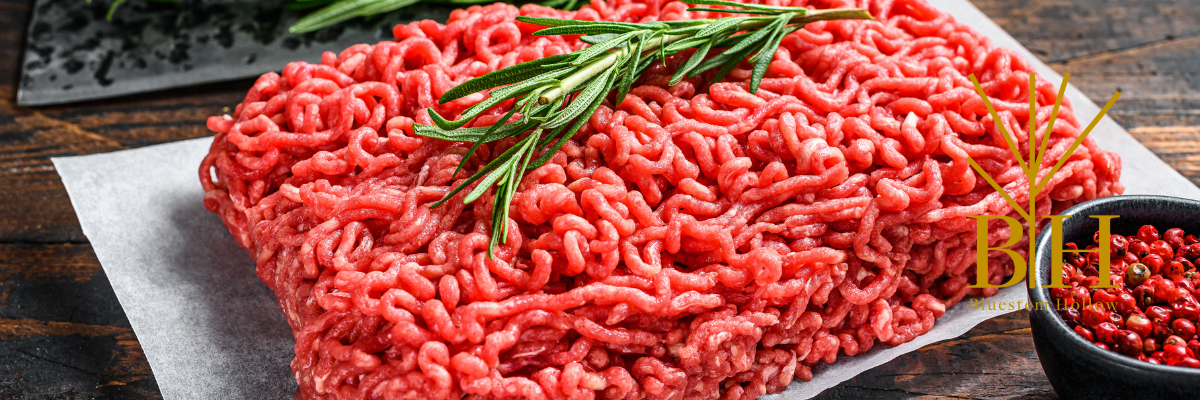
ground beef
Ground beef is simply beef that has been finely chopped or "ground." It's incredibly versatile and a staple in many kitchens worldwide. Bluestem’s ground beef is 80/20 black angus beef.
Why Chef Robert loves Ground Beef: Ground Beef is great because with the right seasoning, it can be rich and flavorful. You can use it in countless dishes, from burgers to tacos, meatloaf to spaghetti Bolognese.
Suggested Cooking Methods: Cook in a skillet, bake, or grill your ground beef.
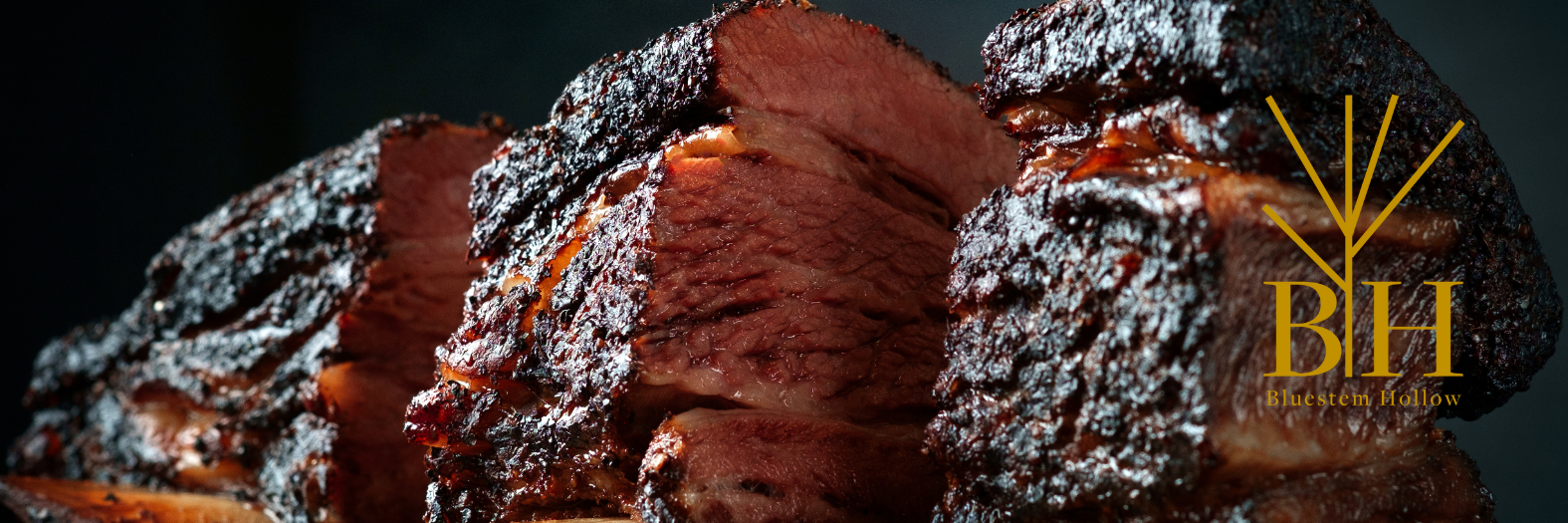
Brisket
Brisket is known for its tender texture and rich flavor and is located in the front of the cow, above the shank.
Why Chef Robert loves Brisket: Brisket is a versatile and flavorful cut of meat that can be enjoyed many different ways.
Suggested Cooking Methods: One of our favorite ways to cook brisket is by smoking it. This involves cooking the brisket at a low temperature for an extended period of time, allowing the smoke to infuse the meat with a rich, smoky flavor. We also love to slow cook the brisket in a crock pot, instapot, or oven. This method is perfect for pot roasts and shredded beef. The last method we suggest is braising the meat. Braising involves cooking the brisket in broth or wine, which keeps the meat moist and flavorful.

CHUCK EYE STEAK
Chuck eye steak is a tender and flavorful cut of beef that comes from the chuck eye roll, a section of the shoulder that is located next to the ribeye. It is often referred to as the “poor man’s ribeye” because of its similarity in taste and texture to the more expensive ribeye steak.
Why Chef Robert loves Chuck Eye Steak: The Chuck Eye Steak is known for its rich marbling and deep beefy flavor, which makes it perfect for grilling, pan-searing, or broiling.
Suggested Cooking Methods: For an oven cooked chuck steak: Sear 3 minutes per side on the stove in a cast iron pan and then bake to your liking. For grilled chuck steak: After an initial sear of 2 minutes on per side over high heat on the grill, reduce heat and cook to your liking.

CHUCK EYE roast
Chuck eye Roast is a tender and flavorful roast that is located in the chuck primal, or shoulder part of the cow.
Unlike many of the tough pieces that come from this area, it is tender and yields much more meat.
It can weigh anywhere between 2 and 5 lb. In weight, depending on the source and size of the steer, and it is great smoked with dry rub and seasoning.
Why Chef Robert loves Chuck Eye Roast: The Chuck Roast has marbling and few fat ribbons, so it delivers a big beefy, buttery taste with minimal fat and sinew to cut or chew through. The fat ribbons and marbling liquify and baste the joint as it cooks meaning you get a very similar taste to a steak, just like the Ribeye, but en-masse for the feeding delights of many.
Suggested Cooking Methods: The Chuck Eye Roast is best cooked low and slow after a good initial sear that creates a crust and locks in the juices while it cooks.
thors hammer
thor’s hammer, also known as beef shank, is a visually striking and flavorful cut of meat. It is carved from the upper part of the cow’s leg.
Why Chef Robert loves Thor’s Hammer: Thor’s Hammer is as impressive in appearance as it is in taste.
Suggested Cooking Methods: Our favorite way to cook Thor’s Hammer is by smoking it. This technique involves cooking the meat at a low temperature for an extended amount of time, allowing the smoke to infuse the meat with a rich, smoky flavor. Another way to cook Thor’s Hammer is by slow cooking it or braising it.

Mock Tender
Mock tender is cooked as a steak and ideally served thinly sliced, or it can be used in soups or stews.
Why Chef Robert loves Mock Tender: When prepared the right way, Mock Tender can be a tender and flavorful cut of meat.
Suggested Cooking Methods: We love to braise, slow roast, cook in a slow cooker, and use mock in stews to allow the collagen to break down into gelatin and leave the steak succulent. Braising – Browning then slowly simmering in broth, wine, or sauce

Cubed Steak
cubed steak is a cut of beef that has been mechanically tenderized, leaving a distinctive pattern of small indentations or “cubes” on its surface. TYPICALLY, Cubed steak comes from the top or bottom round portion of the cow.
Why Chef Robert loves Cubed Steak: With the versatility of cubed steak and it’s quick cooking, Cubed Steak can be a tender and flavorful steak.
Suggested Cooking Methods: We love pan-frying, braising, slow cooking, and grilling Cubed steaks. One of our favorite ways to prepared Cubed Steak is by breading the steak in a seasoned flour or breadcrumbs and frying it until golden brown.

Flank & SKirt Steak
Flank steak and skirt steak are both long, odd-looking cuts of steak. If you’ve ever had fajitas, then chances are it was one of these cuts. The flank is located at the cow’s bottom abdominal area, while the skirt is a thin, flavorful cut located in the diaphragm area.
Why Chef Robert loves Flank & Skirt Steak: Flank and skirt steak are known for their rich flavor, ability to absorb marinades, and quick cooking.
Suggested Cooking Methods: Flanks steaks take to marinades very well, and some marinades can help to tenderize the meat. High heat and quick cooking are the best ways to cook flank steak. It can be stuffed, grilled, or seared. Skirt steaks take to marinades even better than flank steaks and are best cooked quickly over high heat, although it can also be slow-cooked and braised. Skirt steak is best seared or grilled and makes a great stir-fry meat. It is the classic cut used in fajitas.

Cross Cut Shank
The Cross Cut Shank is A portion of the leg, which is used extensively for movement. As a result, it is typically cut into cross sections called Shank Cross-Cuts which are braised to make flavorful, fork-tender dishes such as Osso Buco.
Why Chef Robert loves Cross Cut Shank: The meat contains a higher amount of connective tissue, which breaks down when cooked slowly, resulting in a melt-in-your-mouth texture.
Suggested Cooking Methods: First, season the meat generously with salt and pepper. This will help to enhance the natural flavors of the beef. Next, marinate in your choice of herbs and spices for at least an hour. Simple options like garlic, rosemary, and thyme work wonders in adding depth to the final dish. If you have the time, consider searing the steak in a hot pan before slow-cooking. This step helps to develop a rich crust and adds a caramelized flavor to the meat.

denver Steak
Denver steak is a flavorful and tender cut of beef that comes from the chuck primal, specifically the underblade section of the cow.
Why Chef Robert loves Denver Steak: With its good marbling and rich beef flavor, it makes a great choice for various cooking methods.
Suggested Cooking Methods: We love grilling, pan-searing, using the sous-vide, and reverse searing Denver Steaks.

Strip Steak
Strip steak is one of the premium steakhouse cuts from the short loin, also known as NY strip. It is considered among the higher-end cuts of beef, along with filet mignon, and the ribeye.
Why Chef Robert loves Strip Steak: The strip is a tender cut providing intense flavor and rich marbling (for flavor and juiciness). It’s also a great choice for beginners because it is easier to prepare and cook than other cuts.
Suggested Cooking Methods: We love to grill, pan-sear, cook in the oven, reverse sear, or sous-vide our Strip Steaks.
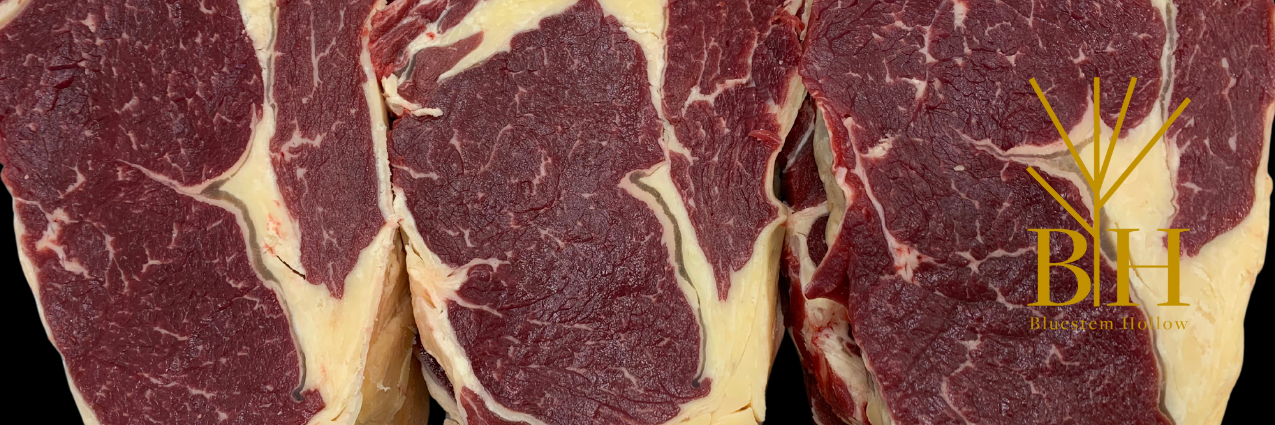
ribeye Steak
Ribeye steak is a premium cut of beef from the rib area, known for its high-fat content, tenderness, and rich flavor.
Why Chef Robert loves Ribeye Steak: Chef loves Ribeye for their tender texture, beefy taste, and high level of intramuscular fat, called marbling.
Suggested Cooking Methods: The best ways to cook ribeye are to use a cast iron skillet or a classic pan-sear, then roast. Always let the meat come to room temperature before cooking, and let it rest afterward.

Sirloin Tip & Top sirloin
Sirloin tip and top sirloin are flavorful cuts of beef that can be versatile in cooking. When prepared properly, They are tender and nutritious, and cost less than some prime cuts.
Why Chef Robert loves Sirloin Steak: The actual cooking is minimal both in terms of time and complexity, tenderize and add a flavorful marinade to make the perfect steak for sandwiches, fajitas, salads, rice or noodle bowls.
Suggested Cooking Methods: These cuts need to be cooked low and slow for a prolonged time (ideally braised) or briefly at a high temperature which works only if it has been sliced thin.

Sirloin Tip roast
Sirloin tip roast comes from the round primal, near the back of the cow. Despite its name, it's not part of the sirloin. People love it for its leanness, affordability, and versatility.
Why Chef Robert loves Sirloin Tip Roast: Can be roasted, slow-cooked, or even sliced thin for sandwiches.
Suggested Cooking Methods: Rub with a mixture of salt, pepper, garlic, and herbs. Marinating overnight can enhance the flavor. Sear in a hot skillet or roast.

Flat iron steak
Flat iron steak is a cut from the chuck. It's known for its rich flavor and tenderness, comparable to more expensive cuts like ribeye or tenderloin.
Why Chef Robert loves Flat Iron Steak: It has a robust, beefy flavor and it is cost effective.
Suggested Cooking Methods: Can be grilled, pan-seared, or broiled.
Flanken Ribs
Flanken ribs, also known as short ribs cut across the bone, are known for their rich flavor and tender texture. These ribs are cut across the bones, resulting in thin strips of meat with multiple small bones. This cut is particularly popular in Korean cuisine, often used in dishes like Galbi.
Why Chef Robert loves Flanken Ribs: The meat of a flanken rib is well-marbled, making it incredibly flavorful when cooked properly. The bones add extra richness to the dish as they release collagen and marrow during cooking.
Suggested Cooking Methods: Flanken Ribs should be marinated for at least a few hours to overnight and then grilled, broiled, slow cooked or braised.
dino Ribs
Dino ribs, also known as short plate ribs or serratus ventralis ribs, come from the short plate primal cut, located just below the rib primal. These ribs are specifically ribs 6, 7, and 8, and they target a single muscle - the serratus ventralis, which is known for its tenderness.
Why Chef Robert loves Dino Ribs: The serratus ventralis muscle is very tender, making these ribs a favorite for slow-cooking methods like smoking or braising.
Suggested Cooking Methods: You should trim any excess fat and silverskin from the ribs. Season the ribs, and then let them sit for 30 minutes to absorb the seasonings. These ribs are best smoked or grilled. For extra tenderness, you could wrap the ribs in foil with beef broth and cook for an additional 1-2 hours.

Beef back Ribs
beef back ribs come from the upper part of the rib section, specifically the ribs closest to the spine. They're essentially what's left after the prime rib or ribeye steak has been removed, making them leaner but still quite flavorful.
Why Chef Robert loves Back Ribs: Because they retain a deep, beefy flavor, particularly when cooked low and slow, allowing the connective tissue to break down.
Suggested Cooking Methods: You should either smoke, grill, or oven-roast your ribs.

Sirloin Tip roast
Sirloin tip roast is cut from the hindquarters of the cow, is both economical and flavorful. It's a lean cut that, when cooked properly, becomes wonderfully tender and delicious.
Why Chef Robert loves Sirloin Tip Roast: Chef loves that the Sirloin Tip Roast can be used in a variety of dishes, from traditional roasts to sliced beef.
Suggested Cooking Methods: This cut is best seasoned, seared, and roasted.
Picanha steak
Picanha steak is a highly prized cut of beef that originates from the top of the rump, also known as the rump cap or sirloin cap. It's triangular in shape and covered with a thick layer of fat called a fat cap. This fat cap is key to its flavor and tenderness.
Why Chef Robert loves the Picanha Cut: The fat cap gives this cut a rich, buttery flavor when it renders down. It’s super juicy and tender.
Suggested Preparation: Simple seasoning, and then grill or roast your Picanha steak.

eye of round roast
EYE of round roast is a lean and affordable cut from the round primal, located near the rear leg of the cow. It's known for its uniform shape and is often used for roast beef and deli-style cold cuts.
Why Chef Robert loves Eye of Round Roast: It’s a great choice for roast beef and it’s economical, compared to other cuts.
Suggested Cooking Methods: Start with seasoning the roast, searing it, and then roast for about 20 minutes per lb of beef. Because the Eye of Round is a lean cut, be careful not to overcook it.

eye of round steak
EYE of round steak is a lean cut taken from the round, which is located on the hind leg of the cow. It’s shaped like a small, elongated roast and is known for its lack of marbling. Despite this, it's a popular choice for budget-friendly meals.
Why Chef Robert loves Eye of Round Steak: It has various cooking methods, like roasting, broiling, or stir-frying, making it great for many different recipes.
Suggested Cooking Methods: We suggest always to tenderize because it’s a lean cut, this can help break down the muscle fibers and make it more tender. Marinating this cut can add flavor and moisture. This cut is best cooked over high heat for a few minutes on each side or broil it for similar amount of time. Avoid overcooking.

stew meat
Stew meat, usually cut from tougher, leaner parts of the animal like the chuck or round, is wonderful for creating rich, hearty dishes. Its appeal lies in the magic that happens during slow-cooking: the connective tissues break down, transforming the meat into tender, melt-in-your-mouth goodness.
Why Chef Robert loves Stew Meat: Stew meat is incredibly versatile and economical. It absorbs the flavors of broths, vegetables, and seasonings exceptionally well. It's also an ideal canvas for experimenting with different spices and herbs.
Suggested Cooking Methods: Always start by browning the meat in a hot pan with a bit of oil and then slow cook low and slow.
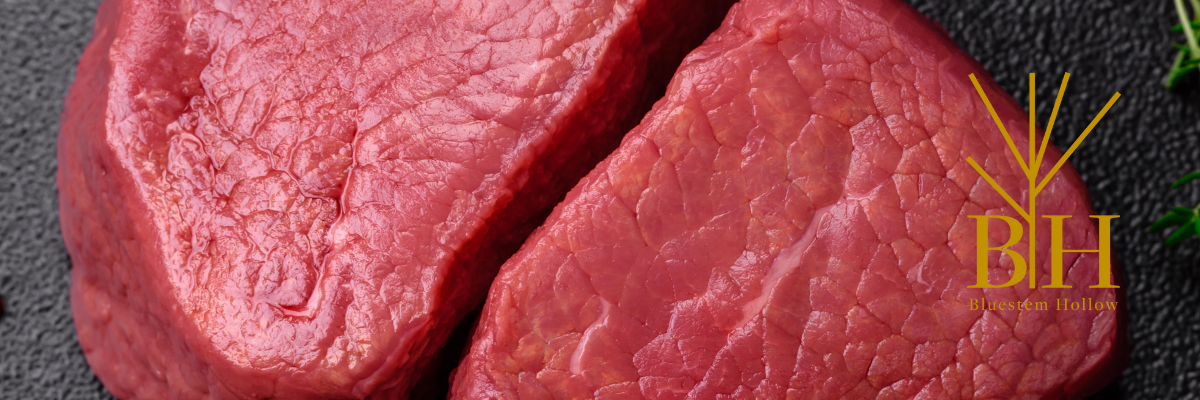
top round steak
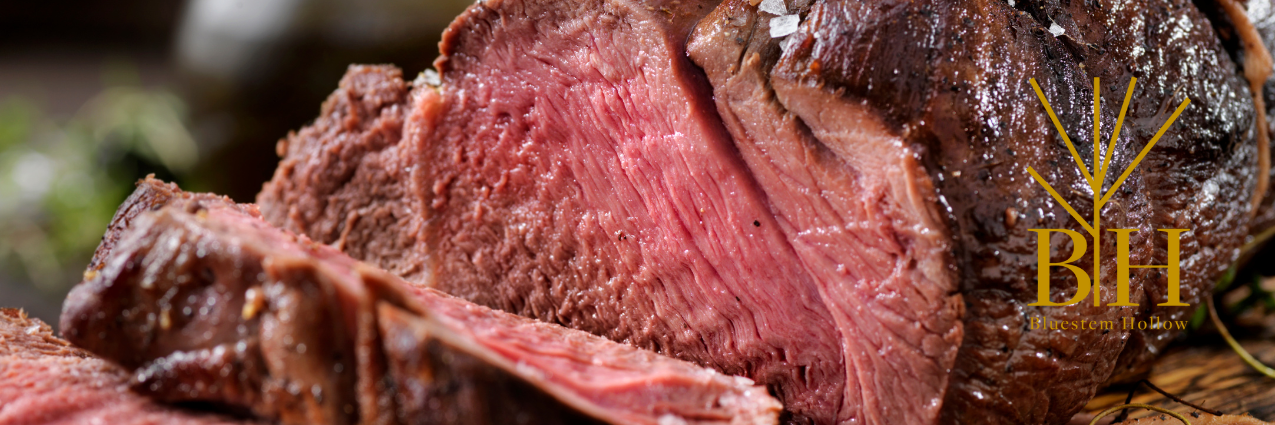
top round roast
Top round roast comes from the rear leg of the cow. its lean and relatively tender compared to other cuts from the round.
Why Chef Robert loves Top Round Roast: It’s great for roasting because it holds up well to the slow cooking and it makes for a perfect, hearty, comforting meal.
Suggested Preparation Method: Season well, sear on all sides, and then slow roast.
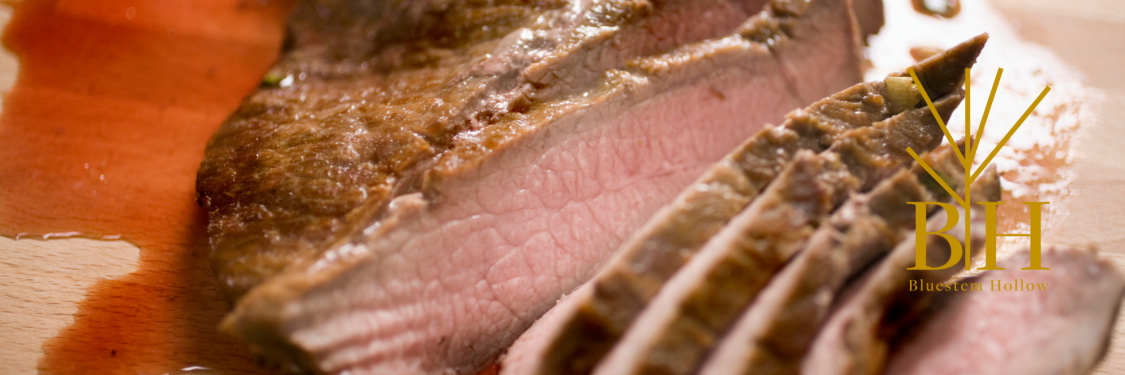
london broil
London Broil is less a specific cut of meat and more a method of preparation. Traditionally, it involves marinating and then broiling or grilling the meat, typically top round, and slicing it thinly against the grain.
Why Chef Robert loves London Broil: It’s economical while still very satisfying. The marination process makes it flavorful.
Suggested Preparation Method: Marinate for a few hours or overnight and then broil or grill on high heat for 5-7 minutes on each side.

tri tip
Tri-tip is a triangular cut of beef from the bottom sirloin. This cut is popular in Californian cuisine and is known for its rich, beefy flavor and tender texture.
Why Chef Robert loves Tri-Tip: It’s versatile and easy to cook. It has a perfect balance of marbling and lean meat, which results in a juicy, flavorful bite.
Suggested cooking methods: We recommend either grilling, oven-roasting, or slow cooking the Tri Tip cut. Always rest before slicing!

short ribs
Short ribs are one of the main types of beef ribs along with back ribs. They may come from the front section of the cattle or the ventral (abdominal) section. In other words, short ribs may come from the chuck and plate areas of the beef.
Why Chef Robert loves Short Ribs: Short ribs are some of the most flavorful cuts of beef. They have a rich beefy flavor thanks to the combination of juicy meat and rich marbling.
Suggested Cooking Methods: Beef short ribs are often braised as the liquid helps them to cook through, while the fat slowly melts, leaving behind a rich sauce that’s full of flavor. Short ribs will release a lot of fat during the cooking process, and you will probably want to skim some off; this can be done gently using a spoon while still hot. If you have time, however, it’s easiest to let the ribs chill overnight in their liquid and fat, then remove the fat as a solid layer the next day before reheating. This resting time will also intensify the flavor of the meat, so it’s well worth doing.


















